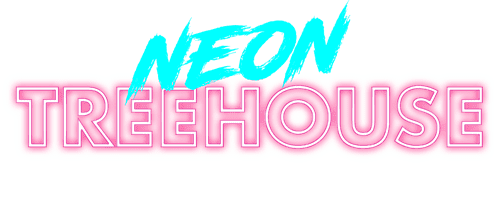2021 has been the year of major privacy changes online. Apple has now enforced their App Tracking Transparency (ATT) prompt, which affects app advertisers and advertisers that optimise, target and report on web events, by limiting data sharing.
In this blog, we are going to breakdown the impact and opportunities presented from the attribution windows on the Facebook network. This will be particularly useful for those in retail and eCommerce, though this will also be of interest to those in industries looking to generate contacts and enquiries as the same principles will apply. We will also look into the future affects of third-party cookies being phased out across the web.
What exactly is attribution?
Broadly speaking, the goal of attribution is to determine which channels and messages had the greatest impact on the decision to convert or take the desired next step. So when talking about this from a digital advertising perspective, it’s determining which advertising platforms and ads on these platforms can be considered to have had high input on someone’s activity, whether this is a page view, add to cart, purchase, or enquiry. Attribution as a number, explains how many actions have occurred as a result of an ad, therefore assisting with the measurement of its success.
However, not all attribution is measured equally. Each platform does measure attribution based on different things, and the windows of attribution are different too (which is, what window of time is being used to determine whether someone takes an action, in relation to when they saw or interacted with an ad). What exact specifics of this are too great to explain in this article, but if you’re eager to learn more about it you can learn about Facebook’s attribution systems here, and about Google attribution systems here.
First Attribution Change
Facebook has made a number of changes to attribution settings. To start, Facebook merged the account level attribution window and the ad set level conversion window into a new ad set level attribution setting. Why? To ensure that conversions measured are the same ones that inform campaign optimisation and allows increased clarity when analysing ad performance. Essentially, removing 28-day windows as the data sharing limitations imposed on the ability to accurately measure this, as well as the 7-day page view window. Now, the following windows are what is supported for attribution windows:
- 1-day click
- 7-day click (default after prompt enforcement)
- 1-day click and 1-day view
- 7-day click and 1-day view (initial default)
Note that there are some types of campaigns that not all window options will be available.
What about changes to my current campaigns? The table below contains details of before and after reporting scenarios for active ad sets.
Before |
After |
|
| Conversion window (ad set level, used for delivery) | Attribution window (account level, used for reporting) | Attribution setting (ad set level, used for both delivery and reporting) |
| 1-day click | Any combination of 1-day, 7-day, 28-day click and view windows.
(Default: 28-day click and 1-day view) |
1-day click |
| 7-day click | Any combination of 1-day, 7-day, 28-day click and view windows.
(Default: 28-day click and 1-day view) |
7-day click |
| 1-day click and 1-day view | Any combination of 1-day, 7-day, 28-day click and view windows.
(Default: 28-day click and 1-day view) |
1-day click and 1-day view |
| 7-day click and 1-day view (default for most campaigns) | Any combination of 1-day, 7-day, 28-day click and view windows.
(Default: 28-day click and 1-day view) |
7-day click and 1-day view |
Second Attribution Change
There are bigger things around the corner. For Google and its Chrome product, which accounts for 64% usage globally and 93% in Australia more specifically, is making some adjustments for future attribution modeling and measuring. Whilst these are in the future, it’s important to note what this means for measurement.
In fact, in a recent announcement Google has stated that “While there’s considerable progress with this initiative, it’s become clear that more time is needed across the ecosystem to get this right.” You can read more about this announcement here.
Phew, a bit of time to prepare then.
But what are they actually changing? Essentially, Google is looking to phase out third-party cookies.
Why? The concept is relatively simple and does aim to ultimately better the internet. In Google’s “Privacy Sandbox” initiative, it aims to create web technologies that both protect people’s privacy online and give companies and developers the tools to build thriving digital businesses to keep the web open and accessible to everyone. Essentially, wanting to make for a better more private internet, whilst facilitating a positive transition into this space for small businesses.
This is a much more positive outlook for advertisers than the structure in which Apple has shifted its platform to more privacy, which leaves almost all businesses worse off than before. Though speculation, there are rumours around the potential for Apple to be launching its own ad platform to make use of the new gap it’s created in market, as well as resolve the reduced ad performance that many businesses are experiencing through social platforms.
I’ve moved away from the point here a bit, but it’s important to know this context, as it explains the more recent changes that Facebook has made around its attribution modelling. As a second change to their attribution modeling, Facebook has shifted its default Attribution windows again. This is in part due to the changes released by Apple for its ATT measures but is also a sign somewhat of what’s to come in the future.
Before the launch, Facebook had defaulted to a 7-day click or 1-day view attribution setting. However, as Apple has started to enforce new requirements, including limitations around view-through attribution, the default attribution setting has changed to 7-day click only. They have completely removed the view attribution modeling as a default. What’s worse is that many campaigns experienced an auto-adjustment of these results which may have led to a seemingly large drop in ROAS numbers or the like.
Cut me off at the knees? I think not.
Note, this is only a default measurement. You can still measure on 1 day post-view.
We strongly recommend keeping with this format for the time being over the default measurement structure.
Facebook is measuring for post-click and post-view with a number of modelling formats to as accurately measure the overall results. They also state that not all conversions from iOS14 devices will be included, but better to measure as much data as we can for optimisations of campaigns as well as true effectiveness, rather than to concede to the incredibly reduced attribution windows.
A workaround from the treehouse
We are currently trialling the use of Offline Conversions as a measurement tool to match purchases through websites with the impressions and interactions received to better determine view-through and click-through attribution.
This is something that is available on both Google Ads and Facebook Ads.
With offline conversions, traditionally you would measure how much your ads lead to real-world outcomes, such as purchases in your stores, phone orders, bookings and more. Our thought process is, you should essentially be able to use the same principle for your web visitors as well.
Once your offline conversions are imported, you can compare offline conversions from your physical stores to the list of people who saw or clicked on your ads (as well as, people who purchase online versus those who clicked on or saw ads). This will help you understand the effectiveness of your ad campaigns.
Note: In order to use this feature, you must create an offline event set in Events Manager and associate it with an ad account BEFORE your campaign starts. You can also upload offline conversion data directly with the offline conversions API or partner integrations. This is where online purchases can be particularly easy to integrate, as you can move online data on orders into a spreadsheet and feed the data back into Facebook or Google.
Excitingly, we’ve been invited to a pilot program being run by Facebook on this…which we’ll be sure to share the results with you on.
And for the future? Not so “new” strategies emerge
So we have some more immediate solutions, but what about the future?
The future is still digital. Marketers must continue to be digital and data-first in order to succeed. But how does that happen with what looks like a continuingly restrictive structure emerging?
First-party data is always going to trump anything else, and with third-party cookies becoming less valuable in the future, now is the time to start thinking more carefully about your efforts to build up customer data.
On an enterprise level, there are solutions like Salesforce CDP that can help you manage customer data with a single source of truth — providing more intelligent, actionable, and trusted data at your fingertips. Though, they often sit with enterprise pricing to match the value they provide.
Ultimately, efforts to build your customer database to reach directly re-emerge as an important factor for marketing campaigns. With this, the ability to retarget lists, as well as email marketing and text messaging, will take a more important role in marketing particularly on an initial acquisition basis rather than simply re-engagement and membership based.
It is important to note that this is not an apocalypse to social and digital ads. Not even close. In fact, despite not being able to measure sales on a view basis in the future as accurately as we once could, this will have not as much impact on people’s purchasing behaviour as it will on the metrics we use to measure them. Whilst not being able to measure directly, purchase interaction styles will still be trending the way they are currently.
So, our predictions are that social media will continue well into the future as a vital part of the mix. We also expect that funnels, conversion campaigns, ecommerce campaigns around retargeting cart activity and more will remain as part of digital advertising efforts. However, we also believe that those direct marketing methods like email and text will play an important role beyond membership bases and customer re-engagement, toward some part in the MOFU acquisition processes.










